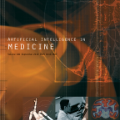The aim of video summarization is to shorten videos automatically while retaining the key information necessary to convey the overall story. Video summarization methods mainly rely on visual factors, such as visual consecutiveness and diversity, which may not be sufficient to fully understand the content of the video. There are other non-visual factors, such as interestingness, representativeness, and storyline consistency that should also be considered for generating high-quality video summaries. Current methods do not adequately take into account these non-visual factors, resulting in suboptimal performance. In this work, a new approach to video summarization is proposed based on insights gained from how humans create ground truth video summaries. The method utilizes a conditional modeling perspective and introduces multiple meaningful random variables and joint distributions to characterize the key components of video summarization. Helper distributions are employed to improve the training of the model. A conditional attention module is designed to mitigate potential performance degradation in the presence of multi-modal input. The proposed video summarization method incorporates the above innovative design choices that aim to narrow the gap between human-generated and machine-generated video summaries. Extensive experiments show that the proposed approach outperforms existing methods and achieves state-of-the-art performance on commonly used video summarization datasets.
翻译:暂无翻译




